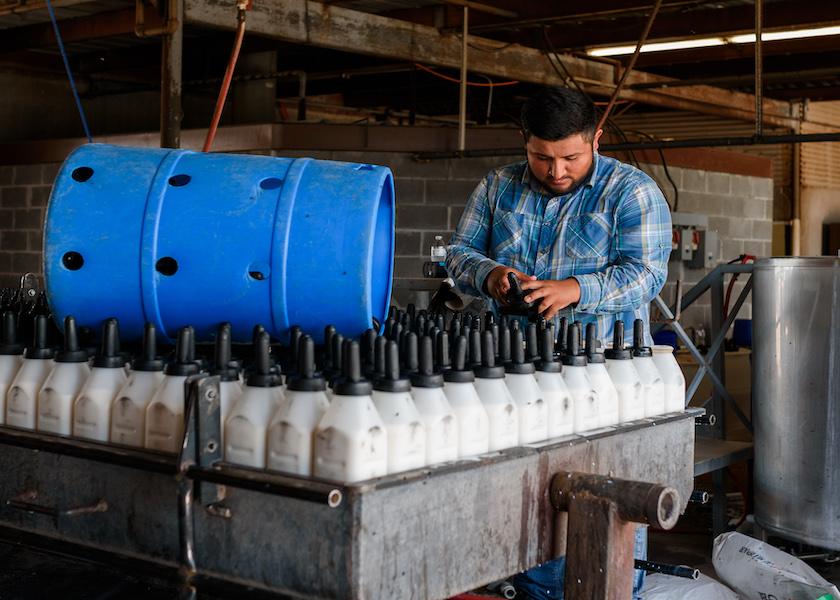Without proper cleaning and sanitation of feeding equipment, disease and illness can quickly spread among calves.
Cleaning calf and heifer feeding equipment is a vital part of every dairy. Without proper cleaning and sanitation of feeding equipment, disease and illness can quickly spread among calves. Dr. Don Sockett, DVM, with the Wisconsin Veterinary Diagnostic Laboratory, provides the following steps to ensure calf feeding equipment is properly sanitized.
1. Rinse - First, using warm water, about 90 degrees F, rinse dirt and milk residues off both the inside and outside of feeding equipment. Do not use hot water to rinse.
2. Soak - Next, soak the calf feeding equipment for 20-30 minutes in a mixture of hot water greater than 130 degrees F and 1 percent chlorinated alkaline clean in place (CIP) detergent.
3. Wash - Then, thoroughly wash inside and outside of the feeding equipment with a brush. You can also wash bottles and buckets in an industrial dishwasher. Fats melt at temperatures greater than 110 degrees F, so keep the water temperature above 145 degrees F during washing. Manually wash bottle nipples with a brush. Do not wash nipples in a dishwasher, as they fail to properly clean nipples and this can lead to high bacteria counts in the milk. While manually washing nipples, check for any visible cracks and signs of wear and tear. Replace those that are worn. Cracked nipples can harbor bacteria.
4. Rinse again - Next, using warm water, about 100 degrees F, that contains 50 ppm of chlorine dioxide, thoroughly rinse inside and outside of calf feeding equipment. Then rinse the equipment with acid that contains 50 ppm of chlorine dioxide once or twice per week. After rinsing the nipples, keep them in a covered container filled with a sanitizing solution until they are used.
5. Dry - Then, allow the equipment to drain and dry before using again. Avoid stacking upside down on a concrete floor or on boards, as this can inhibit proper drying and drainage.
6. Final preparation - Lastly, spray the inside and outside of equipment with a 50 ppm solution of chlorine dioxide two or less hours before use. Allow a minimum of 60 seconds of contact with equipment.
After all six cleaning steps have been completed and the equipment is dry, it should be ready to use again. The above steps refer directly to calf milk feeding equipment, but the same considerations for cleaning and sanitization should be given to the water and starter buckets. At a minimum calf water buckets and starter buckets should be cleaned and sanitized between groups of calves.
Land O'Lakes Purina Feed LLC is North America’s leading feed company serving producers nationwide through local cooperatives and independent dealerships by providing an extensive line of animal nutrition, ingredients and expertise.
*Reprinted with permission from Dr. Don Sockett, Wisconsin Veterinary Diagnostic Laboratory. This expert calf-care tip is brought to you by Land O'Lakes Purina Feed.

